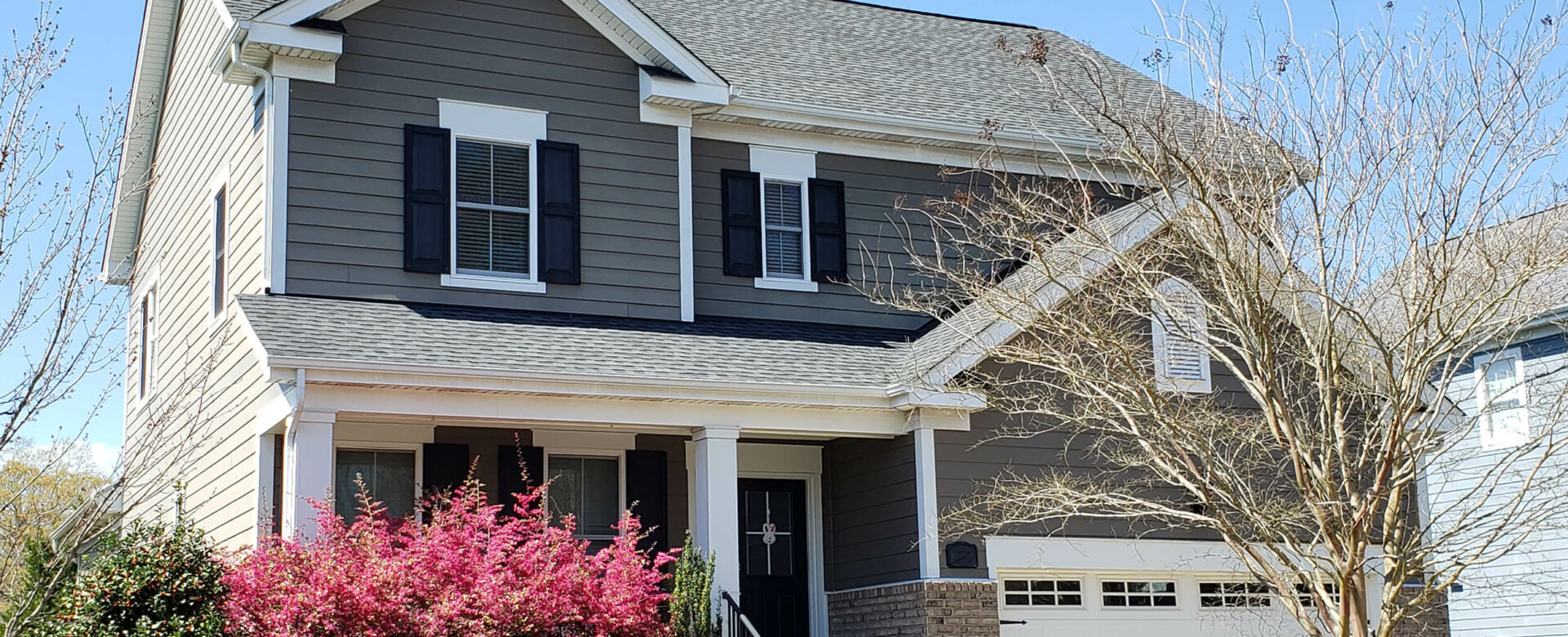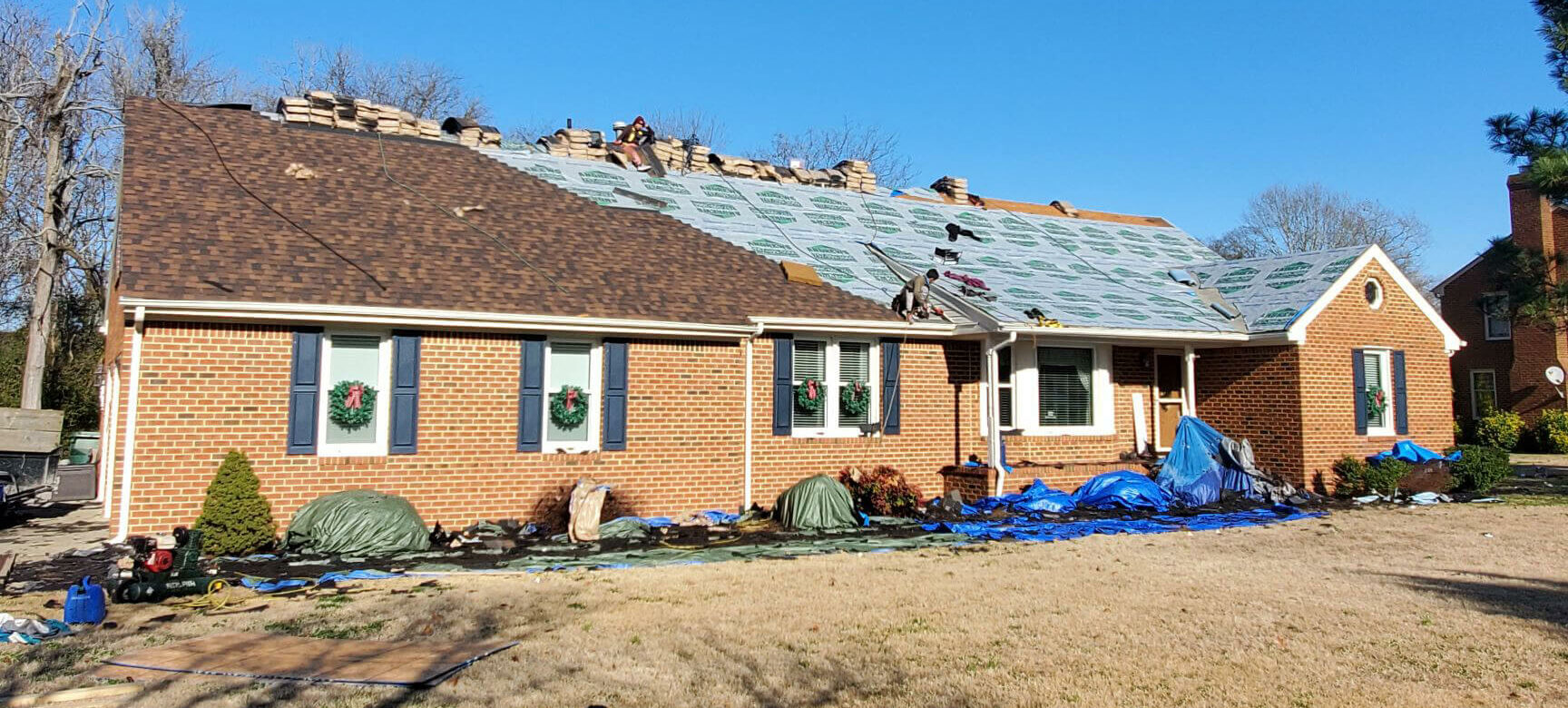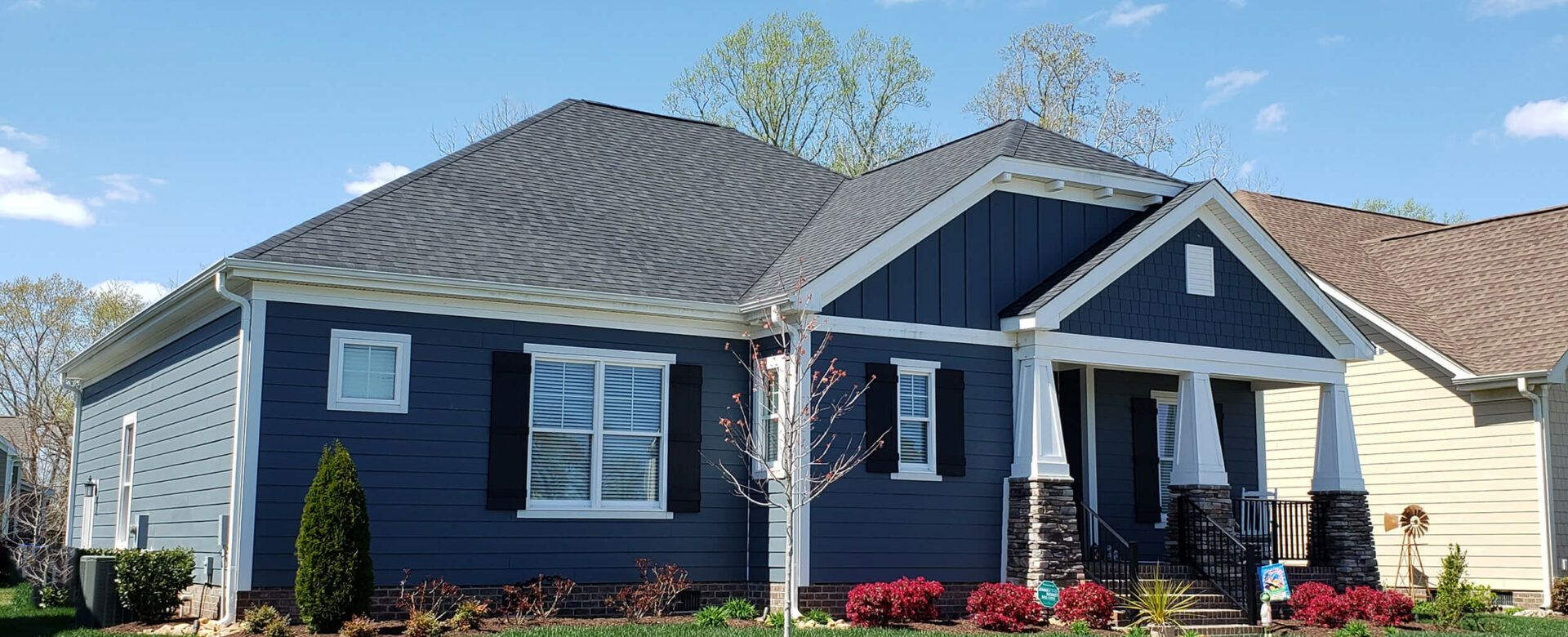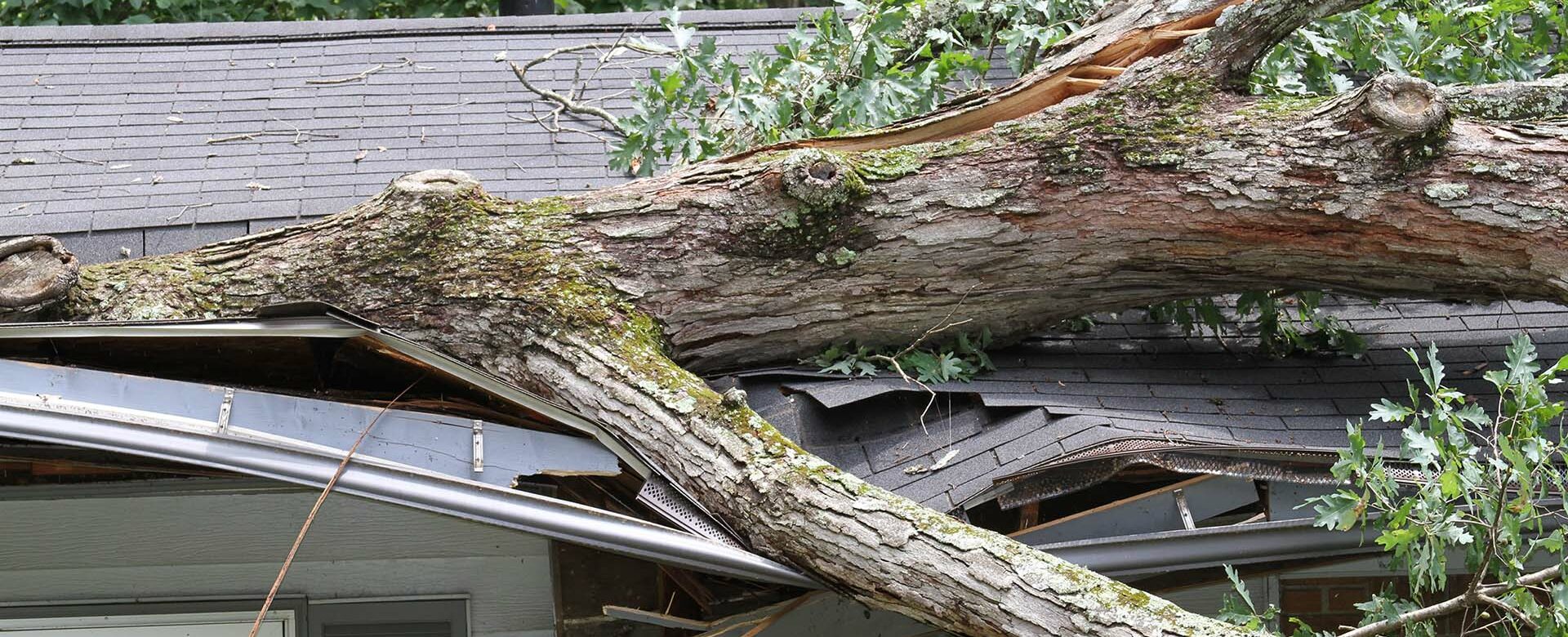Gutters do much more than create a nice, neat visual frame for your home’s roof.
Gutters play an important role in diverting water away from your home. Why does this matter? Because when gutters are not in place, and those typical southeastern Virginia pop-up storms happen, rain is sheeting off your roof and directly down to your home’s foundation. Of course, moisture and foundations are not a great combination. Over time, moisture pooling around your home’s foundation can cause serious issues. For homes built on a slab, the constant flux of moisture then dryness causes the concrete to expand and compress, which over time can cause cracks and shifting. That in turn can lead to plumbing issues, wall cracks, bowed floors and more. For homes with a crawl space, that area may become damp if not properly ventilated, which invites mold, rot and termites. For the rare homes in the Tidewater region with basements, not having gutters can cause flooding and moisture damage there as well.
Perhaps if you lived in a dry, arid environment where rain only happened occasionally, foregoing gutters may be OK. But in the cities of Hampton Roads, the rainfall average is just over 47 inches – that’s almost 10 inches over the national average. Homes in this area without functional gutters are bound to have costly issues over time.
However, just having gutters in place doesn’t automatically mean you’ve avoided this issue. If your gutters are not functioning properly, you could wind up in the same boat. Gutters can stop functioning because of dents, structural damage, and of course – clogs. In this region, gutters should be cleaned out at least twice a year – the spring and fall. But it’s also good practice to check on them and do any necessary cleaning after any big storm systems that may have caused additional debris to land in them.
It’s also important to remember that not all gutter systems are created equal. While it’s better to have some sort of gutter than none at all, if you’re building a home or replacing your gutter system, it may be time to look into a high-quality brand that can stand up to the storms and heavy rain in Coastal Virginia. Rapid Rain™ Gutter Systems is a new product that functions unlike any other previous gutter product. That’s because it provides a higher capacity, but without the bulky look. It’s designed with architectural styling in mind and is available in a wide variety of colors.
The Rapid Rain™ system is made from 18.5% heavier metal than standard gutters, and is therefore erected with heavy duty hangers for stability and durability. It is coated with a patented ScratchGuard™ paint finish, and is backed by a lifetime warranty. It has also received the Good Housekeeping® Seal of approval.
For homeowners who prefer not to climb up on a ladder to clean their gutters every year, the RapidRain™ system can also be fitted with a patented MicroGuard. This cover has over 48 perforations per square inch so that it keeps out even the smallest debris, while still allowing water to flow through at a high volume. MicroGuard is also virtually invisible from the curb, so the entire system helps beautify your home inside and out.
If you’re considering installing or replacing your gutters, contact Andrews Roofing. Our team of licensed and insured professionals will install your gutter system, and we stand behind it with our workmanship guarantee. We have a long-standing reputation in the Hampton Roads region for quality work and customer service. Don’t let rain destroy your house from the ground up – contact us today.




